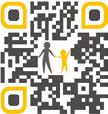www.nasen.org.uk

Assistive Technology

Essential for some but useful for all. We explore some of the features that are already available

Teaching Emotional Literacy
We outline why emotional literacy plays such a vital role in supporting young people with learning difficulties.
Inclusivity in practice
We discuss inclusivity in the workplace, and the ways it can have a meaningful impact on the whole community.
ISSN 2631-5696 Also available online
JULY/AUGUST 2023 / ISSUE 40


















Welcome
By Annamarie Hassall MBE, Chief Executive, nasen
Published
by
#40
W
Did you join us at nasen Live 2023? Our annual conference is always a great place for connecting and hearing from lively speakers. Our theme this year, ‘SEND and beyond’, opened many thought-provoking conversations about culture, gender, language, the relevance of community and identity, through a lens of intersectionality. Future editions of Connect magazine will feature articles from some of the speakers, providing stimulating content to continue those conversations.
This edition includes the second article in a two-part series, ‘Developing a culture of compassion for school staff’. You can catch up online if you missed part one, ‘The emotional impact of teaching’.

Digital related content includes articles on assistive technology and a further one on mental health and artificial intelligence (AI). Particularly topical is the article, ‘Supporting pupils with autism in schools’.

The DfE published the annual update of SEND data in England on 22 June, showing an increase in pupils diagnosed as autistic, an increase to 4.3 per cent for those with an EHC plan and up to 13 per cent for those at SEN Support. Make sure to look out for our September issue of Connect for a closer look at the figures.

As the end of term or a summer break approaches, on behalf of the nasen team I want to extend our thanks and appreciation for your professional interest in education, in SEND and developing inclusive practice in your school, college or setting.
Since nasen Connect magazine relocated to the front of the nasen website, you have been able to freely share a link with your colleagues, so please do distribute this widely across your networks.
elcome to the 40th edition of nasen Connect.On behalf of the nasen team I want to extend our thanks and appreciation for your professional interest in education.
Fax: 01827 313005
Email: education@nasen.org.uk
Designed by: Headlines Partnership Publishing, 4 Milnyard Square, Bakewell Road, Orton Southgate, Peterborough, England, PE2 6GX
Email: info@headlinespp.uk.com www.headlines.uk.com

A CIS Leaders in SEND Recruitment Education EMAIL US: education@nasen.org.uk
Advertising enquiries: nasen House Tel: 01827 311500
Email: sales@nasen.org.uk
Editorial enquiries: nasen House Tel: 01827 311500


Email: education@nasen.org.uk
© nasen. All rights reserved. No part of this publication may be copied or reproduced, stored in a retrieval system or transmitted
in any form or by any means electronic, mechanical, photocopy, recording or otherwise without the prior permission of nasen.
The views herein are not necessarily those of the editor or nasen.
Acceptance of advertisements does not imply recommendation by nasen. Not all photographs in nasen Connect depict children with special educational needs. Many of the photographs are taken in integrated classes. nasen would like to thank all those who have contributed photographs.
Registered Charity No. 1007023
nc
START / 03
www.nasen.org.uk
nasen nasen nasen House 4/5
Registered Company, limited by guarantee, No. 2674379 (England and Wales) Amber Close Amington Tamworth Staffordshire
Amber Business Village
B77 4RP
Tel: 01827 311500
While every care has been taken in the compilation of this publication, nasen cannot accept responsibility for any inaccuracies or changes since compilation, or for consequential loss arising from such changes or inaccuracies, or for any other loss, direct or consequential, arising in connection with information in this publication.
https://nasen.org.uk/nasen-connect
REGULARS
8 JULY/AUGUST 2023 / ISSUE 40
7 44 / Reviews 45 / Ask the team 46 / Events diary
FEATURES
14 / Northern Ireland update
Ken Perry, principal of Dundonald High School in Northern Ireland, offers a look at the school’s use of funding and how it can benefit the students and the wider community.
16 / Supporting pupils with autism
We hear from Eve Godwin, educator and parent, on strategies to support pupils with autism.

19 / Teaching emotional literacy
Johanna Aiyathurai, CEO of Learn and Thrive, outlines why emotional literacy plays such a vital role in supporting young people with learning difficulties.
23 / Compassionate support for teachers’ emotional work
In the second article in the series, Jon Reid examines the need for compassionate support for teachers to enable them to effectively manage the emotional aspects of their role.

27 / Mental health and marginalised communities
Nathan Rutter outlines some of the challenges facing children of colour with social, emotional and mental health (SEMH) needs in mainstream education.
30 / Learning disability and the employment gap
Zoe Mather asks if our examination system is failing pupils with a learning disability and, if so, what can employers and colleges do?
34 / Can tech help teen mental health?
Emma Taylor, children’s clinical lead of Wysa, discusses the potential role that artificial intelligence (AI) could play in supporting youth mental health.
38 / Inclusivity in practice
Shelly Wood, founder of The Plane Tree Shop, discusses inclusivity in the workplace, and the ways it can have a meaningful impact on the whole community.
40 / Assistive Technology: essential for some but useful for all
Michael Surr, education officer at nasen, explores assistive technology, including some of the features that are already available to all.
42 / ADHD in girls: workshop to support the overlooked
19
nc nasen connect 04 / INSIDE
Contents 16
/ Membership Focus
After learning of her diagnosis, Sally Gordon discusses her lived experience of ADHD and looks at how to provide help where it is needed. / Have your say 10/ Sector update





30 27 42 38 23 34 nc www.nasen.org.uk


UK’s leading SEND show returns to London on 13 & 14 October 2023
us for two packed days of learning, sharing and connecting as we bring together SEND experts, education professionals and exhibitors from across the UK. Whether you want to build your CPD learning, source new resources for your learners, or simply connect with the wider community, register for free today to secure your place.
your seminars before Friday 21st July and save with the early bird!
Empowering the SEND community since 1992 Media partners FREEREGISTER TODAY!
The
Join
Book
tessendshow.co.uk
Welcome to Membership Focus
Welcome to the Membership Focus. This edition, join us as we take a moment to reflect on the academic year and recognise your hard work and dedication. Together, let’s appreciate all the progress you’ve made and the positive influence you’ve had on the lives and learning of the children and young people that you work with.
Once again, our flagship SEND event of the year, nasen Live 2023, was an absolute must-attend, and we are so proud of the incredible day we managed to create. Through our uniquely designed SEND and Beyond approach, we were able to bring together professionals from all backgrounds and disciplines to experience an invaluable day of learning and development.
Our delegates had the chance to attend a range of interactive seminars and panels from industry experts and leading academics, as well as networking opportunities with like-minded peers. We would like to take this opportunity to thank everyone who joined and supported us in making nasen LIVE 2023 an unforgettable experience! With your help, we hope to make the event even bigger and better for next year. Register your interest for 2024: nasen.org.uk/page/nasen-live-2024
You may also be interested in nasen’s SEND CPD on Demand subscription; a truly flexible training resource. With individual and school subscriptions starting at just £199, you can boost your learning with convenient access to over 70 pre-recorded SEND CPD sessions tailored to meet the needs of the entire education workforce. Find out more today: nasen.org.uk/send-cpd-on-demand
If you’re still hungry for more SEND CPD and want to access all the essential SEND tools and resources that you need, make sure you view our online resources repository. With our huge selection of resources available, you can find the latest information and support to help you on your journey. Get up to speed with our range of tools, tips, and access to the very latest knowledge and support available today: www.nasen.org.uk/resources
We greatly value the feedback of all our members and would especially like to hear any suggestions you may have for improving our service. Your opinion matters and you are welcome to share it. Please do contact us directly at membership@nasen.org.uk
Kind Regards, The Membership Team
CULTURAL INCLUSION FOR YOUNG PEOPLE WITH SEND


Author: Paul Morrow
Publisher: Routledge, nasen / Spotlight

ISBN: 978-0-367-64123-8
Price: £26.99
Use the QR code and the Preview Book button to view chapter 1.

Paul Morrow provides an insightful exploration of the reasoning and experience of access to cultural and artistic experiences for young people with SEND. This book is a great resource for practitioners both in education and the field of the arts seeking to enhance cultural inclusion and to understand its impact at a personal level. The book presents topics with the theoretical background and moves to provide a set of questions, tools and frameworks for you to audit your own practice and understanding. The chapter with the voice of lived experience from parent carers highlights the challenges and showcases the good
practice that exists around inclusion in cultural settings and advice for those who want to improve.
While it covers many areas, practitioners may feel there could have been more emphasis on the implementation of inclusive strategies in specific educational contexts. An exploration of digital access as a means to improve inclusion and the use of technology would have been beneficial for those outside London as the book is very London-centric in its examples. Overall, it successfully illuminates the complexities of cultural inclusion for young people with SEND and offers practical guidance for fostering a more inclusive and equitable educational environment.
MEMBERSHIP / 07 nc www.nasen.org.uk
@nasen_org
On-demand webinars
I attended the excellent SEND and AP Improvement plan webinar and found it very informative. However, I was struck by how many people were on the call. It seems that SEND is high on the agenda for many schools, and perhaps those schools not attending may be so overwhelmed in dealing with the current workload that they are unable to engage, and instead it is something planned for the future. What is nasen’s take on this?
Headteacher, Stroud
Editor: Thank you for your feedback. We hope that the webinars we provide will be in demand across the sector and will be informative and succinct for a sector that has so much to deal with. Your second point is something we have noticed. Workload post-Covid has returned to its height and time is precious. If there are things we can improve for our members, such as timing during the school day or week, then please get in touch and we can ensure these sessions fit with what the sector needs. We do also provide recordings, so although turn-out may not have been as many as you would expect, accessing on-demand has continued to prove popular in our post-Covid world. The recording is available here: bit.ly/3MmoII8
Inclusive resources
My school recently subscribed to Rockerbox News, and we noticed the co-produced resource with nasen. As a SENCO I am always the only one seemingly with an eye on the implications for pupils with SEND and, when it comes to whole school events, when I am trying to advocate for those pupils who may not be able to engage I often appear to be negative about the arrangements. Your resource really helped when planning for a whole school Coronation event. Can we expect any more?
SENCO, Gravesend
Editor: That’s great feedback. Rockerbox News is one of our new partners and the company is working in collaboration with our education team to continue to deliver inclusive news to schools. The Five ‘Be’ Considerations for Inclusive Awareness Days (available here: https://bit.ly/44rjV0j) was the first in a series of planned co-produced resources. Keep checking our website for further resources as they become available.
Early years briefings
As a member of the Early Years sector, I came to value and look forward to the Early Years Meeting the Needs of Every Child series of briefings. I see from the website that Mandy Wilding has left nasen and I am wondering if these will cease, or will they resume in the near future?

EY lead, Farnborough
Editor: Mandy has retired and is enjoying her newfound freedom! We do have a new education officer with an early years remit, Anna Speke. Anna will begin focusing on our early years offer and there are some interesting programmes in the pipeline to look out for.
The Meeting the Needs of Every Child sessions were extremely well attended and successful. Although the funding for these sessions has now ended, there are many other EY resources available via the website: https://bit.ly/3NE7Tul

nc
08 / HAVE YOUR SAY
www.nasen.org.uk
We would love to hear from you, so please send any comments or letters to
education@nasen.org.uk
In case your letter is chosen for publication, please include your name and setting.
Have Your Say gives you, the reader, a forum to share your thoughts and
about current issues in the world of education and SEND. It is also
to share your reactions to, and
about, what you have read in previous editions of nasen Connect.
Don’t forget, you can ‘Have Your Say’ via Facebook and Twitter too. your
say...
opinions
the place
thoughts
01827 311500
education@nasen.org.uk @nasen.org












Sector

Boost for children with SEND accessing inclusive PE and sport
New data released by the Youth Sport Trust has revealed PE and school sport experiences have rapidly improved for children with SEND through the Inclusion 2024 programme. The three-year Government programme has supported more than 70,000 young people, including many with Special Educational Needs and Disabilities (SEND), to access inclusive PE and school sport.

Young people have been taking part in more inclusive and accessible PE lessons, school swimming, para sports
as part of fun festivals, and learning key life and leadership skills. The programme has brought about change by building support systems, working with a range of stakeholders and empowering an expert network of schools which have a wealth of insights and experiences in making PE and sport inclusive to help other schools around the country.
Ali Oliver MBE, Chief Executive at the Youth Sport Trust, said: “Inclusion 2024 has been a game changer. It has built capacity, confidence and creativity in the PE and school sport system – ensuring both the curriculum and out of school hours provision is accessible, inclusive
and empowering for disabled children. Alongside this, Inclusion 2024 has been building awareness and understanding in disabled and non-disabled young people through inclusive youth leadership training and peer-to-peer coaching. This is not only ensuring the time young disabled people spend in PE lessons or doing sport is meaningful and high quality, but it is also helping them to become healthier and happier by achieving the Chief Medical Officer’s guidance of at least 20 active minutes a day.”
The full report is available here: https://bit.ly/3NbvjFU
nc www.nasen.org.uk 10 / SECTOR UPDATE ALL THE LATEST NEWS FROM ACROSS SEND @nasen_org 01827 311500 education@nasen.org.uk @nasen.org Update
Updated guidance for permanent exclusions and suspensions published
New guidance has been published by the DfE to come into effect from September 2023 regarding the use of permanent exclusions and suspensions (https://bit.ly/43AmYm5). The guidance has been updated to reflect specific changes to the legislation governing the disciplinary school suspension and permanent exclusion processes. These include: amended regulations about a headteacher’s ability to rescind an exclusion and the processes to be followed; allowing a governing body reinstatement meeting to be held via the use of remote access if requested by parents providing given criteria are satisfied.

These changes come on top of those updates made in 2022 which require notification to parents and to the social worker or Virtual School Headteacher (VSH) and the Local Authority to be made without delay. Further guidance on managed moves and off-site direction was provided along with the rights of pupils to be included within the process appropriate to their age and ability to understand. They have published a guide for parents and carers to accompany the schools guidance.
(https://bit.ly/3P8tQm0)
New data on EHCPs reflects challenging systems and processes
The Government published the facts and figures for Education, Health and Care Plans (EHCP) for 2023 (https://bit.ly/3P9fEJN). The data shows another increase in the number of EHCPs issued, rising nine per

cent to over half a million in total, continuing the trend for yearly increases since their introduction in 2014. This means over the last two years they have increased by nearly 130,000 pupils. Requests for a needs assessment
for an EHCP have increased by 23 per cent compared with last year, with just under 120,000 requests in total. Perhaps the biggest indication of a system that is overloaded is the figure of only 50.7 per cent of plans being issued within the legal limit of 20 weeks. This means over half of the 66,000 pupils are getting their plan finalised and support starting within the deadline. 33,000 pupils are missing out on support as the system is not able to meet the timelines. This figure is at its lowest level since the new Code of Practice came into force in 2015, and lower than during the pandemic, when disruption was unavoidable and understandable. While the average is 50.7 per cent, some local authorities are performing substantially below, the lowest being 3.8 per cent. At the time of writing, the SEN figures are eagerly anticipated, and we will have a full three pages on this in our September edition.
Don’t want to wait for the next issue? Check out https://nasen.org.uk/news
nc www.nasen.org.uk
Exploration 2023 –creative views of young disabled people
UK Disability History Month’s (UKDHM) theme is Disability, Children and Youth in 2023.
They aim to celebrate the views of young disabled people and are asking for them to express the good, the bad and the changes they would like in society. The most insightful, interesting and powerful contributions in each category will be celebrated during UK Disability History Month: 16 November-16 December 2023.
UKDHM use a social model of disability. This means entrants must have long-term impairments of body, senses or mind, and that their disadvantage is caused by socially created barriers of attitude, environment and organisation. Disabled people have human rights which are often denied by prejudice, bullying and discrimination. This approach should be applied in contributions. More detail and preparatory information are available on the website: www.ukdhm.org/exploration2023
Groups can be facilitated by staff. Contributors will need parental permission to enter.
There will be four age groups for entrants and entries can be written essays, poems, posters, artwork (1 x A3 sheet) (Word or PDF), films, signing, acting, audio (MP4 file) or any combination. Entries must be submitted with an application form (https://bit.ly/3qGsyET) and an electronic high-resolution version of their entry to susie@ukdhm.org by Tuesday 31 October.
The Department for Education has launched a call for evidence on generative artificial intelligence use in education to the sector. They are interested in views on risks, ethical considerations, and training for education workforce. The consultation opened on 15 June and will run until 5pm on 23 August and is accessed here bit.ly/3JgfMDc. In addition, the DfE will speak to experts through forums, surveys and interviews.

Alongside this, the Government is continuing to deliver on the pledge made last year to enable all schools to connect to gigabit broadband by 2025.

As part of London Tech Week Gillian Keegan, Education Secretary, announced the launch and said: “Artificial intelligence is going to transform the world around us and help grow the economy. The workforces that are best equipped with the skills and knowledge they need will be the ones that ride the wave. We must make sure education is one of them. For that potential to be realised, we –the Government, our schools, colleges and universities – need to be able to understand those opportunities, as well as the real risks new technology brings. That’s why we want to kick
Call for evidence around the use of generative artificial intelligence in education nc
start a conversation with experts from across education and technology to hear their views and learn from their experiences. This will help us make the right decisions to get the best out of generative AI in a safe and secure way.”
nasen
12 /
connect
SECTOR UPDATE
DfE protects funding for vulnerable children and young people
The DfE has announced it is not proceeding with proposed cuts to Youth Services and a range of Early Years programmes including the Pathway Fund, Sure Start, Bright Start and Toybox. In addition, the Department is not proceeding with the full scale of proposed cuts to Extended Schools. The education budget for 2023/24 has been cut by £66.4 million (2.5 per cent) compared with last year, despite rising costs and increasing demands for services, resulting in an estimated funding gap of around £382 million.
Faced with this extremely challenging financial position, the Department has already taken significant decisions to reduce expenditure by £172 million. These included the cessation of the Engage, Healthy Happy Minds and
School Holiday Food Grant schemes from the end of March 2023 and reductions to the Education Authority’s Aggregated Schools Budget and Block Grant.
Education Permanent Secretary Dr Mark Browne said: “The Department’s vision for all children is that they will be happy, learning and succeeding. Delivering on this is particularly challenging in the current budgetary context, especially in terms of addressing the needs of our most disadvantaged children and young people. We know that early intervention, especially for our most vulnerable, is critical for development, improving learning outcomes and supporting longer-term societal benefits.
“Accordingly, having carefully considered all of the principles in the Secretary of State’s decision-making guidance, I am not cutting funding to Youth services and a range of
Early Years programmes including the Pathway Fund, Sure Start, Bright Start and Toybox. In addition, I am not proceeding with the full scale of proposed cuts to Extended Schools.
“Evidence shows that the scale of the proposed cuts to Early Years, Extended Schools and Youth Service programmes would create greater budgetary pressures for the next financial year and beyond across a range of areas, including special educational needs.”
The Department has published an Equality Impact Assessment Consultation as part of the final budget (https://bit.ly/3Jbg9yX) and interested parties are encouraged to make responses. The consultation responses received will be used to inform further mitigation measures and reallocation of any additional funding available during 2023-24.
Don’t want to wait for the next issue? Check out https://nasen.org.uk/news
nc www.nasen.org.uk
Creative use of funding for everyone in the school community
Ken Perry, principal of Dundonald High School (DHS) in Northern Ireland (NI), offers a look at the school’s use of funding
Our school has grown considerably over the past ten years, from 156 pupils in 2013 to a current enrolment of 620.
Some of the main reasons for this are our caring ethos, strong pastoral background and good community links.
The staff promote the school motto ‘A caring school at the heart of the community’. We try to ensure that all pupils are accepting of cultural diversity, treated with equality and have a sense of belonging.
Like many other schools in Northern Ireland, Dundonald High
School embraces the Department of Education’s (DE) Extended Schools funding (bit.ly/3WXBzoW) to facilitate additional curricular and extracurricular activities and support pupil learning, development and wellbeing.
Our extended schools coordinator and teacher, Ashleigh Robinson, and I recently implemented a creative idea to maximise the Extended Schools funding in a twofold way. We support the community through the new ‘Dundonald Star Singers Community Choir’, which subsequently enables us to facilitate a complimentary breakfast club to benefit pupils.
Ken has been principal of Dundonald High School (DHS) an allability, non-selective, 11–16 school in East Belfast, Northern Ireland (NI), for ten years. He was previously the school SENCO and is also a past pupil.


The choir meets every Wednesday evening in the school. There are about 50 members, current and retired staff, past pupils, parents and members of the wider community, with a range of age and musical ability. It is an inclusive environment where everyone shares their mutual love of singing. We sing pieces from across all musical genres, enjoy old favourites, learn new songs and harmonies, make new friends and have fun.
The Extended Schools funding covers the costs for facilitating the choir, then weekly voluntary donations from choir members are used to provide toast and juice free of charge at the Breakfast Club, where pupils enjoy socialising, reading, listening to music, playing games and completing homework.
The choir has already performed for audiences to raise additional funds for DHS. Now we also want to support local charities and are planning a fundraising concert to purchase an electrically adjustable chair for the Cardiology Department at the Royal Victoria Hospital, Belfast.
I am very grateful for choir members’ generosity, and remember, everyone is welcome to join!

nc nasen connect 14 / NORTHERN IRELAND UPDATE
and how it can benefit the students and the wider community.
“No matter my mood when I go to choir, I feel uplifted after our singing session. (choir member)
KEN PERRY
BIO








Supporting pupils with autism; a parent and teacher view
We hear from Eve Godwin, educator and parent, on strategies to support pupils with autism.


I’ve worked in education for 15 years now, as a class teacher, a reading recovery teacher, a SENCO and now a specialist teacher. Over the years, education and society have undergone huge changes in terms of understanding neurodivergence. It’s not always easy to keep up and, as a parent of two neurodivergent children and an education professional, I still feel I’m learning more every day and I’m sure I will continue to do so.
Looking back to my earlier days in teaching and as a new SENCO, there are some things I wish I had known, and many things I wish I would have done differently to support the neurodivergent pupils I worked with and their families. We know that more needs to be done in society to fully embrace the strengths of the neurodivergent population; I can certainly say I’m amazed by my neurodivergent children every day and I want to see an educational system that allows them and their peers to flourish and thrive. To achieve that, we need to offer the support and guidance that embraces difference and encourages autistic identity and that helps ensure schools are not scared to try doing things differently.
There are two aspects, in my opinion, that schools need to think about to support their autistic pupils. First is to audit the environment and everyone within it; the sensory environment, the routines, the demands and the pupils and staff. Second, schools must support pupils with autism, enabling them to communicate, to

self-advocate so they are able to say what they need and to develop strategies that they can use when the world gets difficult. If you take my first point, historically there has been a belief that we need to put strategies in place to help pupils with autism develop skills that are more neurotypical, such as advising social communication groups based on a neurotypical communication style.
Eve is the lead for Autism for the Specialist Teaching Service in Warwickshire. She became passionate about supporting pupils with autism when her eldest daughter was diagnosed at age nine after several years of struggling at school.
This is done with the conviction that we need to make our pupils with autism more resilient through exposure. Research, and more importantly, the autistic voice, now tells us that this approach can have long-term implications for our pupils. Instead, we need to advise schools on how to make sure everyone’s communication style is accepted and valued; that relationships are built in different ways and mutually beneficial relationships come from mutual understanding. The key to this is peer and staff awareness. To enable the environment to be right for pupils with autism, we need to ensure
nc nasen connect 16 / FEATURE ➜ TEACHING & LEARNING
We need to advise schools on how to make sure everyone’s communication style is accepted and valued; that relationships are built in different ways and mutually beneficial relationships come from mutual understanding.
EVE GODWIN
BIO
that they are understood and valued by the staff that work with them and the peers that work alongside them.
My second point is about building a toolkit. We all have one. It might be that when you feel overloaded you go on a walk, you call a friend, or you do an activity or hobby that you enjoy. All pupils need that toolkit, pupils on the autism spectrum even more so, and it’s the role of everyone working together to support them to develop that. It’s about recognising how they are feeling, about them being able to communicate that in a way that is right
for them, about them being understood by others and then having strategies to support them with that feeling.
I believe that when these elements are put together by everyone around that pupil and with the pupil themselves, we can support a safe environment in which pupils can learn and feel a sense of belonging.

I’ve produced some tips that I think are helpful when advising schools on supporting their pupils. It’s not an exhaustive list and I’m not pretending to be an absolute source of knowledge that always gets it right, but I am someone who aims to do this, and I think that’s what it is all about.
This article first appeared on the website of Autistic Girls Network: https://autisticgirlsnetwork.org/

Listen – listen to parents and listen to pupils. Working together means open communication and that includes an ability and willingness to listen.
DIRM – Does It Really Matter? What matters and is important to pupils with autism and what is important simply because it’s the way it’s normally done. Teach with the outcome in mind; the journey pupils with autism take you on is usually much more exciting than one you could have planned for. Involve individuals with autism in sensory audits of the environment – if you don’t, you will miss things. Teach strategies about recognising anxiety and managing it, provide opportunities throughout the school day to empty their stress bucket. Make reasonable adjustments so that each pupil has equal access to learning in an environment in which they feel safe, secure and valued. Never make assumptions. Take the time to stop, observe and listen.
I’m sure more things will be added to the list as I continue in my career, and we hear more from advocates for pupils with autism who share their journey and learning with us, but I will end on the words of my child … “it’s not hard – just do what I need to be happy”.
nc
www.nasen.org.uk









Teaching Emotional Literacy

As a parent of a 14-year-old with Down’s syndrome, I so often hear the words ‘happy’ or ‘sad’.
But does she really mean it? Or is it that she lacks the language and emotional literacy to say, “I’m cross, scared, or jealous.” When she lashes out at a sibling or refuses to engage in a maths lesson, how much is down
to not being able to identify, label and communicate her feelings? As she heads towards adulthood, will she be able to interpret the emotions of others, allowing her to build friendships and relationships? Understanding our emotions forms the base of so many important things, from building long lasting relationships, to managing our mental health. It all stems from the basics of emotional literacy.
Emotions are an integral part of human experience and are central to our daily interactions. They shape how we perceive ourselves and the world around us, influencing our thoughts, behaviour and decision-making. Understanding emotions and their role in our lives is a crucial aspect of personal and social development, and this is particularly important for children with learning difficulties.
nc www.nasen.org.uk FEATURE / 19 ➜ TEACHING & LEARNING
Johanna Aiyathurai, CEO of Learn and Thrive, outlines why emotional literacy plays such a vital role in supporting young people with learning difficulties.
HOW WELL CAN YOU INTERPRET YOUR OWN EMOTIONS?
As educators, we play a critical role in supporting young people with learning difficulties to understand their emotions. One important aspect of this is for educators to be able to interpret the physical signs of their own emotions. Educators who can identify and manage their own emotions can model these skills for their students and support them in developing their emotional literacy. How often do we take that time to stop and fully ‘feel’? How does your body react when it is frightened, excited, jealous, or overwhelmed? As educators, we need to
be able to identify these internal physical features of emotion so we can support our learners to identify and label their own. It is this skill that will enable us to fully engage with our learners and support them to understand their own interoception and physical signals, interpreting these to be able to better understand their emotions. Taking that time to reflect on your own internal signals is vital to supporting others to learn those skills.
SUPPORTING YOUNG PEOPLE
When working with young people, we often hear them being accused of being ‘mean’ or even bullying, when the truth is they simply don’t understand the impact of their words. They can’t read the signals in others or themselves. They can find themselves accused of ‘inappropriate behaviour’ towards a peer, only for us to discover they didn’t fully understand how their actions affected that person. When young people with learning difficulties struggle to identify and manage their own emotions, it can


lead to a range of issues. They may become overwhelmed by their emotions, leading to challenging behaviour or social withdrawal. In social situations, they may struggle to understand social cues or interpret the emotions of others. This can lead to misunderstandings, miscommunications and social isolation. It can also lead to difficulties in forming and maintaining relationships, which can have long-term negative consequences for their social and emotional wellbeing.
WHEN DO WE MOVE ON FROM TEACHING ABOUT EMOTIONS?
The simple answer is, we don’t. Unfortunately, what we often see in secondary education is an assumption that young people have the skills needed to interpret and label their own emotions. We often believe that they understand what they feel and, to some extent, can interpret the feelings of others. This can lead to educators and parents not explicitly teaching these concepts and, when things go wrong,
nc nasen connect 20 / FEATURE ➜ TEACHING & LEARNING
Educators who can identify and manage their own emotions can model these skills for their students and support them in developing their emotional literacy.
they don’t unpick the reasons down to these most basic levels. So many of our young people need this information retaught, reinforced and consolidated on a regular basis. With so much emphasis placed on mental health and emotional resilience in the typical population (and rightly so), we mustn’t forget to give these coping mechanisms and skills to all our young people, regardless of their learning needs.

Age-appropriate resources are crucial in helping young people with learning difficulties understand emotions. When teaching about interoception, emotion identification and coping mechanisms, we need access to resources that hit the right learning levels and don’t infantilise our learners. We need clear, accessible resources that can be used right up to adulthood. They must also be simple and quick for educators and parents alike to use to guide their learning journey. That’s why Learn and Thrive, a national charity, has developed free video-guided lessons, downloadable visual resources and student packs covering this area.
As part of the Learning for Life project, Learn and Thrive has published two modules including ‘Growing Up and Keeping Safe’ and, more recently, the series covering ‘Emotions’. This series supplies video-guided lessons, activities and pointers for future learning. They are intended to provide a springboard to deeper conversation and the personalisation of the subject. The videos follow a set pattern and work through eight different emotions, with re-caps and games along the way.
You can then use the same process for any emotion you choose. Personalise the approach and discuss the individual differences for learners as part of the activities to support them to better understand their emotions and what they can do to self-regulate. The resources are designed to be used individually, in small groups, or in classrooms and they include emotions scenarios, visuals for expressions, board games and much more. The project is run by a charity inspired by young people with Down’s syndrome, and while the teaching
approach is based on the learning profile of young people with Down’s syndrome, it can be differentiated for many young people with a range of learning needs.

With more content coming soon, Learn and Thrive intends to dig deeper into the RSE curriculum, covering the areas most needed by our young people in a way that is accessible to a wide range of learners with additional needs.

Overall, the importance of teaching emotional literacy to young people with learning difficulties cannot be overstated. By understanding and managing their emotions, students can improve their academic achievement, social and emotional wellbeing and their overall quality of life. Educators have a critical role to play in supporting students in this area, and age-appropriate resources can be invaluable in helping young people to develop these important skills. By working together, educators, parents and caregivers can help young people with learning difficulties to thrive and reach their full potential.

When young people with learning difficulties struggle to identify and manage their own emotions, it can lead to a range of difficulties. They may become overwhelmed by their emotions, leading to challenging behaviour or social withdrawal.
JOHANNA AIYATHURAI
Johanna is the CEO of Learn and Thrive, a new charity which empowers learners with Down’s syndrome, through digital learning tools and video resources.
BIO
nc www.nasen.org.uk




Compassionate support for teachers’ emotional work
In the second article in the series, Jon Reid examines the need for compassionate support for teachers to enable them to effectively manage the emotional aspects of their role.
In the previous article, the emotional work of teachers was described and examined. If we acknowledge that teaching, as a relational activity, involves daily emotional experiences, we must also appreciate that teachers’ emotional work can be pervasive, is often complex and at times can be contradictory
and difficult to contain. Because teachers often support children and young people with more complex profiles associated with social emotional and mental health needs (SEMH), adversity, abuse, or trauma, it is important to recognise that their emotional work is often intense, can be difficult, and is, at times, distressing. As suggested previously, the extent of teachers’ emotional work has been largely
neglected or underestimated in previous research and is completely ignored in the current policy context. We must, therefore, ensure that teachers’ emotional work is supported through the development of compassionate school communities.
The importance of compassion with regards to wellbeing has long been recognised. For Professor Paul Gilbert, who originally conceptualised the role of compassion in therapeutic contexts, compassion is associated with an evolved motivation to care. He also suggests that compassion can be experienced for others, from others and for self. Dr Mary Welford, a chartered clinical psychologist who has examined the impact of compassion-based school initiatives, defined compassion as “a sensitivity to our own, and other people’s distress, plus a motivation to prevent or alleviate this distress”. Essentially, while compassion involves noticing difficulties or distress in ourselves and others, importantly, there is then a need to do something about these experiences.
nc www.nasen.org.uk ➜ TEACHING & LEARNING FEATURE / 23
In the context of education, my research revealed that compassionate support for teachers’ emotional work can be experienced through informal, unstructured opportunities and can be experienced from others through more formal, structured opportunities. Compassion for self was associated with individual approaches to self-care.
With regards to informal, unstructured support for emotional work, compassion for others was experienced by teachers when schools collectively exhibited a culture of care, where wellbeing was prioritised and where the ethos of the school encouraged emotional safety. Emotional safety in schools was created when teachers were encouraged to talk openly and honestly about the emotional work that they engage in. In these schools, teacher wellbeing was described as being a pre-occupation for all colleagues, irrespective of role or responsibilities, and was associated with non-hierarchical, equal support opportunities. Consequently, all staff experienced the same support for wellbeing. Teachers in these schools described
feeling part of a family or community, where colleagues, including the senior leadership team (SLT), regularly ‘checked in’ on each other’s wellbeing. While these emotional check-ins occurred throughout the school day, they might also involve a message or a phone call after school, for example. After a difficult or distressing incident in school, a compassionate school response was associated with giving a teacher time and space away from the classroom, where emotional or practical support could be provided. This time and space was spontaneously provided to facilitate rest and recuperation, but also to encourage reflection. Compassion was also experienced when colleagues exhibited an awareness of each other through showing caring concern.
Caring concern was associated with colleagues showing an active interest in each other’s wellbeing through being approachable, available and present. Caring concern was also shown through simple acts of kindness such as making drinks, sharing food or ‘treats’ or writing sticky notes of encouragement, for example.
Structured, formal opportunities to support teachers’ emotional work were associated with organised, protected spaces for teachers to talk about the emotional aspects of their work. These spaces, where compassion from others was experienced, provided regular opportunities for teachers to reflect together and talk openly, honestly and safely about their emotional experiences and feelings without fear of judgement. Giving time to talk about emotional work, through reflective spaces or supervision sessions, offered teachers the opportunity to process this work and to develop shared understandings of their professional experiences in a confidential space. Through sharing emotions, feelings and professional experiences, teachers were encouraged to reflect together on their work with children, class dynamics or professional dilemmas, for example, and to examine the impact of such work on themselves and each other.
While exhibiting compassion for others and experiencing compassion from others were found to support teacher wellbeing, showing compassion for self was also found to be essential. Unfortunately, my research revealed that while teachers did talk about how the wellbeing of others in school was

nc nasen connect 24 / FEATURE ➜ TEACHING
& LEARNING
Compassion for others was experienced by teachers when schools collectively exhibited a culture of care, where wellbeing was prioritised and where the ethos of the school encouraged emotional safety.
supported, they talked less about how their own wellbeing was supported, whether by themselves or others. Self-compassion is associated with looking after one’s own wellbeing. In the context of education, while this is often associated with issues such as managing work-life balance, my research revealed that self-compassion was connected with attempts to separate teachers’ personal and professional identities. This was achieved by creating an emotional, relational, or, at times, physical distance from their work. This was created through activities such as participating in exercise or sports, being outdoors, spending time with family, friends, undertaking hobbies, spending time alone, listening to music, mindfulness, yoga, being creative or going on holiday.
From the perspective of creating compassionate school communities to support the emotional work of teachers, the ethos and culture of a school is particularly important. In schools where teachers feel part of a caring community, they are also more able to talk openly and honestly about the emotional
work that they engage in. When compassion is in play, emotional safety is enhanced. When teachers feel emotionally safe, they are more able to authentically explore the emotional work that they engage in. In reflective spaces or supervision sessions, teachers are encouraged to reflect together during open, honest, and non-judgemental conversations. Providing time and space for teachers to talk about their emotional work enables them to share experiences that are meaningful and relevant to their daily professional experiences. Discussion, in turn, means that teachers are able to sensitively and empathetically consider their experiences and collaboratively think about how best to respond to such experiences.
To support the emotional work of teachers, it is essential that this work is compassionately recognised by government. Recognising the significance of teachers’ emotional work in relation to their wellbeing means there is also a need to acknowledge this work in the context of policy. Once this is achieved, support for teachers’

DR JON REID


Dr Jon Reid is a senior lecturer in child development, special educational needs/ disabilities and inclusion at Oxford Brookes University, where he works with Initial Teachers Education, undergraduate and postgraduate students. He is the MA Education: SEND strand leader, liaison manager for the Social, Emotional and Behavioural Difficulties Association (SEBDA)/Oxford Brookes University collaboration and a trustee for the Institute of Recovery from Childhood Trauma. As part of his doctoral research, he explored teachers’ emotional work, support for their wellbeing and the role of compassion.
emotional work will need to be properly funded to enable schools to provide regular, structured and protected time and space for teachers to talk openly and honestly about their emotional work. This then ensures that they can reflect collaboratively on the impact of this work on themselves and each other. Recognising, acknowledging and supporting the emotional work of teachers will help to create compassionate schools where the wellbeing of the entire community is enhanced.
To learn more about the role of compassion focused therapeutic ideas, the work of Professor Paul Gilbert can offer insights, while Dr Mary Welford, Professor Frankie Maratos and Dr Marcela Matos can inform on compassion-informed approaches in schools.
My Doctoral research exploring teachers’ emotional work, support for their wellbeing and the role of compassion is also available for those who wish to explore a conceptualisation of Compassion Focused Education
After a difficult or distressing incident in school, a compassionate school response was associated with giving a teacher time and space away from the classroom, where emotional or practical support could be provided.
BIO
nc











































































Mental health and marginalised communities
Nathan Rutter outlines some of the challenges facing children of colour with social, emotional and mental health (SEMH) needs in mainstream education.

The identification and support for children with SEMH needs has been a subject I’ve wanted to highlight for a long period of time. As a SENCO of British and Goan heritage in Bristol, I want to help others build an
understanding of the challenges facing students of colour with SEMH needs in mainstream settings. To do this, I explored the societal context of mental health within communities of colour; the current state of these communities receiving SEMH provision, and the impact of disadvantage on their mental health.
POLICY AND PRACTICE
The UK Race Relations Act of 1976 was the first policy that stated the rights of people of colour (POC) to be given access to facilities or services within education if they had a special need. However, subsequent acts have failed to include specific mention of protections to POC. They have also failed to refer to how a lack of understanding of intersectionality can cause professionals to lose sight of all the barriers facing these children. The Equality and Human Rights commission in 2014 provided further guidance to schools on how they should implement the act into their own policies, making sure they remove any policies or practices that were discriminatory to those of different ethnicities. It is important
nc www.nasen.org.uk ➜ LEADERSHIP FEATURE / 27
to note that whilst the Department for Education’s (DfE) Code of Practice suggests organisations should consider training staff to better identify additional mental health needs, there is no mention or guidance on students or groups from different communities. The Royal College of Psychiatrists noted this same weakness in their own policies and highlighted the need for policy reform to improve the practices of their staff to eradicate discrimination in the workplace.
THE ROLE OF CAMHS
Children and Adolescent Mental Health Services (CAMHS) referrals can come from parents through GPs, schools or social care pathways. Data shows that children of colour are ten times more likely to be referred to CAMHS through compulsory channels compared with white British children, with referrals often coming from education or social care pathways. It also identified that referrals from GPs for students of colour were three times more likely to be rejected by CAMHs. When analysing the data, disparities were found within different communities; GPs were referring more white children to CAMHs than would be expected, whereas black and South Asian children were more likely to receive referrals by specialist doctors, and black and mixed heritage children were most likely to be referred by social services. Our academy data reflects the same trend, with more children of colour being referred through social care and educational pathways. When speaking to POC governors, parents and staff members and reviewing research, there is an acute awareness that a lack of cultural understanding plays a role in discriminatory behaviour, which has a trickle-down impact on children’s reflections of race and discrimination in school settings and the barriers to them receiving support.

Academics have pointed to several factors for this: a lack of diversity in the workforce; language and cultural barriers; as well as the evidence of historical discrimination within the sector. In 2018, the Royal College of Psychiatrists stated that a lack of cultural understanding could be impacting the level of care POC receive. Work has been done to improve policy and implementation within the NHS, however, a 2020 report stated that although there was an over-representation of people of colour in the NHS, there was under-representation in senior positions. This filters through to a lack of expertise around different cultures; at the Royal College of Psychiatrists it found that only seven per cent of NHS Trust board members are from an ethnic minority background.

THE IMPACT OF DISADVANTAGE
The Government’s statistics before the pandemic found that one in four children from Asian households and one in five children from black households were growing up in ‘persistent poverty’ compared with one in ten white British households. Recent research points to Socioeconomic Disadvantage (SED) having a detrimental impact on both the physical and mental health of the child, in particular their tendency to seek attention from others. Researchers found links between SED and ‘delayed reward discounting’, a form of impulsive decision making, suggesting that the child’s emotional reactivity was affected on a neurological level, disrupting their decision-making ability. I work in a diverse secondary academy that is made up of many different communities of colour, and even at their young age some of them have already experienced racism in society.
Research released in 2020 points to data around Islamophobia that has shown a weak but significant link between Muslim identity and higher levels of depressive symptoms. When running sessions with many of these students, what often comes up is that staff and people in the Bristol community don’t understand their culture and beliefs, which can lead to conflict and a feeling of alienation. Evidence backs up the statement that the cumulative impact of racism on a regular basis in someone’s life has a long-term impact on their mental health. The Equality and Human Rights Commission acknowledges that mental health issues affect people of colour more severely, leading to an increased likelihood of poverty, poorer educational outcomes, unemployment, and interaction with the criminal justice system.

nc nasen connect 28 / FEATURE ➜
LEADERSHIP
NATHAN RUTTER Nathan is a SENCO and charity trustee based in Bristol. He is passionate about inclusion across education and the charitable sector.
BIO
In 2018, the Royal College of Psychiatrists stated that a lack of cultural understanding could be impacting the level of care POC receive.
OUR DATA
A recent survey sent out to students in our academy aimed to analyse student resilience and mental health across the school to better understand the needs of our different cohorts.
The results showed that black Caribbean and mixed white and black Caribbean students showed some of the lowest scores within our school, whereas those from Asian communities scored higher. Interestingly, students from larger communities that share cultures and religions had some of the highest scores, whereas those from smaller communities showed the lowest scores. Research on the relationship between social status and health has shown that ethnic and religious minorities reported better health when contextual diversity was higher in their communities. Ethnic minorities and Muslims even reported better health than most of their population when the societal disparities such as social status were minimal.
As a result of the findings, the mental health team started implementing a ‘positive role models’ campaign for targeted groups. The campaign advised tutors to contact at-risk students to provide extra support to families, and researched extra training around diversity and positive mental health on student attainment and wellbeing.

A study in 2019 looking at the impact of disadvantage on children of colour suggested that social and community relations play a large role in their mental health development, and that improving these relationships may play a large role in the children’s wellbeing. In the context of my academy, our catchment area falls within the bottom ten per cent of deprivation within the UK, therefore a large proportion of our students are far more likely to face many forms of socioeconomic adversity affecting their educational attainment, wellbeing and life chances. In the current era of Covid 19 these factors have been exacerbated, as the mental health and education of students in these communities has been impacted more than most. It is critical that school leaders reflect on this idea of building communities and cohesion within their environments, to engender a sense of belonging and remove the barriers children growing up in social deprivation experience. My hope is that the increasing understanding and acceptance of diversity within education and healthcare drives the issue forward, so that schools and mental health services are better able to support every child from every community in the UK.

nc www.nasen.org.uk
The Equality and Human Rights Commission acknowledges that mental health issues affect people of colour more severely, leading to an increased likelihood of poverty, poorer educational outcomes, unemployment, and interaction with the criminal justice system.
Learning disability and the employment gap

Is our examination system failing pupils with a learning disability and, if so, what can employers and colleges do?
During results season, there is always discussion about the ‘forgotten third’ of pupils who don’t attain the Government-defined standard pass in English and maths. This has come to mean a grade 4 or above, and these are the ‘golden tickets’ of the accreditation system and will open the doors to further and higher education or employment and training. Pupils who don’t attain this level can be kept out of the jobs market and can feel demoralised.
THE EXAMINATION SYSTEM
The examination system in this country is norm-referenced, meaning that young people are ‘compared with all the others in their cohort taking that examination. If it is a particularly high achieving year group, a grade may be lower than in the previous year’s examination. Grades are set after all candidates have sat the examination and all the raw marks have been collated, transferred to uniform marks and then grade boundaries are set. The grade boundaries are used to ensure that fair standards are maintained from year to year. For example, if that year it is a particularly difficult paper ‘in comparison with other years, the grade boundaries may be lower to reflect this.
In this system there will always be one third of students who will achieve either a grade 1, 2 or 3. They have not been ‘forgotten’ by school, they have been taught the content they need to achieve, but there may be factors affecting their ability to perform under examination conditions. However, the fact is that a grade 1, 2 or 3 is a GCSE pass. This is one of the reasons that GCSEs replaced O-levels; so that the system could be represented across the whole cohort. If those pupils who are predicted to get a 1, 2 or 3 as their best grade were removed from sitting the GCSEs, what would the distribution look like then? It would still need a third of pupils achieving grades 1 to 3.
Zoe began her career on the Graduate Teaching Programme in 2000 as a secondary maths teacher. She then furthered her practice across several secondary schools holding roles including outreach and SENCO. Her most recent post before joining nasen, was as assessment and achievement lead as part of the SLT of an autism-specific allthrough special school.

 ZOE MATHER
ZOE MATHER
nc nasen connect 30 / FEATURE ➜ LEADERSHIP
BIO
Attempts have been made to rectify the race to the ‘golden tickets’ over the years, with the change from grading GCSEs as letters to numbers in England in a phased-in programme, starting with English and maths in 2018 and then cascading through all other subjects. This was a prime opportunity to reset the narrative around grades – a pass is a pass, but we remain in the same position; a grade 4 is considered a ‘standard’ pass which automatically implies that anything lower than this is below standard.
THE ’GOLDEN TICKET’
When this change was introduced, then education secretary, Justine Greening, stated that grade 4 would be the standard pass and grade 5 would be deemed a strong pass.
She said, “I want to be very clear to schools, employers, colleges and pupils themselves that a ‘standard pass’ is a credible achievement and one that should be valued as a passport to future study and employment.” This clarification reaffirmed that
only those pupils with a grade 4 or above were worthy of being accepted into further or higher education and employment. Schools began a new race to the finish line of the ‘golden ticket’ of a grade 4 and above.

Statistics have shown that the gap between disadvantaged pupils has grown since the pandemic. These pupils are battling circumstances that require more than the best teaching; they require them to not be in poverty, they require champions that can support them to find their strengths, communities that value them and additional support to enable them to achieve. These areas have not been addressed and, as a result, these pupils have their trajectory mapped out for them, through no fault of their own. Those that don’t achieve the grade 4 or above find that even entry level jobs require this. This hampers students across the whole range of schools and settings, especially those with additional needs or a disability.

nc www.nasen.org.uk
Statistics have shown that the gap between disadvantaged pupils has grown since the pandemic.
THE POSSIBLE SOLUTIONS
Employers have a part to play in supporting careers programmes within local colleges and schools. They should be getting to know young people and allowing work experience in a variety of forms. Employers can break down the barriers and work with young people and school staff to enable co-production of reasonable adjustments that would benefit all. Some young people may find the challenge of working full-time too much, so employers can consider flexible options that would enable more young people to enter the workforce. Employers can work with young people and mould them to fit the job that they want them to do. They can also review their working practices to ensure they are inclusive; nasen has worked with employers to carry out such audits and provide plans to support businesses to review and develop inclusion. It’s also time for employers to review their working practices and honestly evaluate whether the job role really requires a ‘standard pass’ in GCSE in maths and English. In addition, developing more inclusive interview techniques and person-centred approaches would not only help recruitment but would offer more strategies that support retention of staff.
THE ROLE OF INTERNSHIPS AND APPRENTICESHIPS

Supported internships offer a route for young people to gain, develop and demonstrate the skills needed for the world of work alongside a supportive coach and with access to continued teaching of skills. However, they are unpaid and only available to those young people with an Education, Health and Care Plan (EHCP). They are unpaid to avoid impact on the disability living allowance or personal independence payments that the young person receives.
What they allow for is the young person to hopefully go on to use the skills learned to find paid employment on completion of the supported internship. In the trial evaluation, 36 per cent of the young people went on to gain paid employment, which is much higher than the six per cent of young people with a learning disability who are currently employed.
However, for those who don’t achieve this goal it was ‘frustrating’ that there was no further support for young people to enable them to persevere with moving forward. The programme was credited with increasing confidence and providing learners with the independence and work skills to succeed in future.
https://bit.ly/3K5QhGd
The apprenticeships programme was heralded as a way for young people to access employment, particularly for those

who fall into the ‘forgotten third’. Level 2 apprenticeships are billed as intermediate and, at the equivalent of GCSE level, suitable for school leavers. It seems that many entry level apprenticeships have begun to ask for a grade 4 in English and maths, which is a missed opportunity for business to consider other skills that young people may have.
This is part of the solution; remove the requirements for grades that are not necessary. If we can do it for supported internships and have an opportunity for those young people to achieve, develop independence and increase their self-esteem, shouldn’t this be available for all?
The solution is starting early. The SEND Code of Practice (2015) states that preparation for adulthood should start from the early years, as exemplified in the guide here: bit.ly/3HKpoVx. For secondary settings, the Gatsby Benchmarks (https://bit.ly/3jHQHaU) provide a framework to ensure careers and understanding of future life chances are considered at every opportunity. However, every child needs a champion. The brilliant Rita Pierson TED Talk (https://bit.ly/3I8otzv) discusses the impact of relationships on learning, achievement and success. Ultimately, developing inclusive relational approaches will enable more pupils to see their potential and have someone believe in them to help them achieve it.
nc nasen connect 32 / FEATURE ➜ LEADERSHIP
Employers can break down the barriers and work with young people and school staff to enable co-production of reasonable adjustments that would benefit all.
SEND CPD ON DEMAND



The Ultimate Flexible Training Resource
SUBSCRIPTION
DETAILS
G e t t h e h i g h e s t q u a l i t y C P D f r o m e x p e r i e n c e d e x p e r t s a t y o u r c o n v e n i e n c e , w i t h n a s e n ' s S E N D C P D o n D e m a n d - t h e u l t i m a t e f l e x i b l e t r a i n i n g r e s o u r c e W i t h i n d i v i d u a l a n d s c h o o l s u b s c r i p t i o n s s t a r t i n g f r o m j u s t £ 1 9 9 , b o o s t y o u r l e a r n i n g w i t h c o n v e n i e n t a c c e s s t o o v e r 7 0 p i e c e s o f p r e - r e c o r d e d S E N D C P D t a i l o r e d t o m e e t t h e n e e d s o f t h e e n t i r e e d u c a t i o n w o r k f o r c e
SUBSCRIPTION FEATURES




• A c c e s s t o n a s e n ’ s r e s o u r c e s a r e a , r i c h i n u n m i s s a b l e c o n t e n t a n d t a i l o r e d t o s u p p o r t t h e w h o l e e d u c a t i o n w o r k f o r c e .
• D i s c o v e r a w o r l d o f e d u c a t i o n a l c o n t e n t w i t h o u r e a s i l y a c c e s s i b l e C P D v i d e o s , t y p i c a l l y l a s t i n g b e t w e e n 6 0 - 9 0 m i n u t e s
• N e w l i v e c o n t e n t e a c h t e r m , w i t h r e c o r d i n g s a v a i l a b l e t o v i e w a t y o u r c o n v e n i e n c e
S T A F F E N H A N C E M E N T S T A F F E N H A N C E M E N T
E n h a n c e t h e C P D j o u r n e y o f y o u r s t a f f , e n a b l i n g t h e m t o b e s t s u p p o r t c h i l d r e n a n d y o u n g p e o p l e w i t h S E N D i n y o u r s e t t i n g
C h o o s i n g t h i s a l l i n o n e , c o m p l e t e s u b s c r i p t i o n , o f f e r s u n b e a t a b l e v a l u e f o r m o n e y
T I M E S A V I N G
S a v e t i m e w i t h o n d e m a n d a c c e s s a n d f l e x i b l e a c c e s s t o o u r t r a i n i n g p l a t f o r m – a c c e s s a n y w h e r e , a t a n y t i m e
V A L U E F O R M
V A L U E F O R M
O N E Y
O N E Y
For more information visit the link nasen.org.uk/send-cpd-on-demand
Can tech help teen mental health?
Emma Taylor, children’s clinical lead of Wysa, discusses the potential role that artificial


EMMA TAYLOR
Emma is the children’s clinical lead of Wysa, an AI app for mental wellbeing. She qualified as a mental health nurse in 2012 and has worked in child and adolescent mental health since that time. She has won several awards for her work in nursing and digital innovation. She is an experienced clinical innovator in digital services and the clinical safety officer for Wysa. She is currently leading the first NHS real world study into the use of AI in mental health, funded by NIHR.
It seems that the youth mental health crisis is even more severe than we thought. New research (https://bit.ly/3IuUKR7) reveals that more than eight in ten teenagers are experiencing mental health worries, with one in three needing professional support. But half of young people can’t access the support they need, with many feeling too ashamed or uncomfortable to talk to teachers or mental health teams at school. As a result, a generation of teenagers is silently suffering, with nowhere to turn.
New figures from mental health app Wysa show that the children and young people’s mental health crisis is worse than estimated. Over one in three 13-17 year olds surveyed indicate symptoms of depression or anxiety that warrant investigation.
The figures also show that 82 per cent self-report a range of mental health issues, such as anxiety (49 per cent, rising to 63 per cent of females), trouble sleeping (21 per cent), dislike of image (26 per cent), fear of socialising (29 per cent) and other concerns. Half are worried about their parents’ money, showing the influence of news agenda and the cost-ofliving crisis on teenagers’ mental health.
However, most worrying is that young people aren’t getting the help that they need. More than half (55 per cent) who scored three or more on Generalised Anxiety Disorder Scale – 2 (GAD2) and Patient Health Questionnaire 2
(PHQ2) screening questionnaires for anxiety and depression haven’t spoken to a relevant professional about it.
nc nasen connect 34 / FEATURE ➜ SPOTLIGHT
intelligence (AI) could play in supporting youth mental health.
We need to normalise talking about mental health and provide the resources and education on what to do when struggling, or when faced with difficulties.
BIO
STIGMA AND LACK OF KNOWLEDGE
Their reason is embarrassment (43 per cent), or that they don’t recognise they need help (41 per cent); stigma still prevails, and education about what is normal needs to happen. We need to normalise talking about mental health and provide the resources and education on what to do when struggling, or when faced with difficulties. Although there has been extra focus and investment into supporting people to understand and identify signs of mental ill health, it’s just not landing with young people.
One in six young people (17 per cent) don’t know who to speak to, which rises to a quarter (23 per cent) of 13-15 year olds. Having a mental health nurse in school, or posters about therapists, only work if people are shown how to access them and guided to the necessary support.

LACK OF ACCESSIBILITY
Part of the reason for this is accessibility, particularly at the times that young people need help. Nearly half (49 per cent) experience mental health worries before school and a quarter (27 per cent) just before bed, yet most current solutions are available during school hours. A third (35 per cent) say that the support available is not at the right times for them.
nc www.nasen.org.uk
TURNING TO TIKTOK
When faced with challenges, half of young people would speak to parents (53 per cent), and a similar number to friends (46 per cent). But ahead of CAMHS services (25 per cent) and teachers (21 per cent), is TikTok (33 per cent). Teenagers are using their phones and social media to access mental health support, which may not be accurate or regulated.

When asked how they would feel about a confidential app with tailored support, and if that app and chatbot would be a preference over other people, the answer was often yes. An app is the preference over teachers, doctors and siblings. An astonishing eight in ten (78 per cent) would choose an app over their teachers, and three fifths (60 per cent) would rather get help from an app than their doctor.
This points to a need for a clinically validated and backed digital solution that meets young people where they are and when they need. The research clearly shows us that support isn’t available in the moment our young people need it. Resources mean that young people who present for clinical support have limited and timebound treatment at specific times of the day; which may not be when they most need help. An always-on, flexible solution, that helps them at the moment of need, is necessary.
Hammersmith, Fulham, Ealing and Hounslow Mind (HFEH) is providing Wysa to 13-18 year-olds attending its state school network whose needs are assessed to be suitable for virtual support. The West London based Local Mind Association offers Wysa as a preventative tool and to encourage more young people who need help to come forward.

As Nana Owusu, clinical lead and director of Children and Young People’s
Services, HFEH Mind explains, “We wanted to give teenagers something to help them with their everyday mental health that is convenient, discreet, and feels familiar. Teens are willing to embrace mobile apps and texting is part of everyday life, so we are meeting them on their level with this kind of interactive digital support. Self-help needs to be interactive, engaging and even enjoyable, to encourage teenagers to build their mental resilience and help prevent the onset or deterioration of any diagnosed mental illness.”
HOW IT WORKS
Using an emotionally intelligent artificial intelligence (AI) chatbot to understand and react to emotions and worries could be a first step that young people are more willing to undertake. Gaining information on techniques to help cope with challenges could provide much-needed assistance and, when extra support is required, young people can then take guidance from a qualified professional therapist. AI could make it easier for young people to access the vital mental health support they need, when they need it. Young people shouldn’t have to wait until they are very unwell to receive treatment or support. So, whether they need one-to-one therapeutic support, wellbeing resources, immediate and ongoing support and information, or ondemand exercises to help their mental health, digital tools can be with them every step of the way. If we want to raise mentally healthy young people, we need to be giving them the resources they need, when they need them
nc nasen connect 36 / FEATURE ➜ SPOTLIGHT
Teenagers are using their phones and social media to access mental health support, which may not be accurate or regulated.

Inclusivity in practice

Recently, we have seen progress made around breaking down barriers and building a more inclusive society. This is both wonderful and necessary, as many marginalised communities face disproportionate adversity, especially in the workforce. One of these groups is young people with SEND.
According to the Department for Work and Pensions, the employment gap for disabled persons reached 28.4 per cent in 2021, painting a harsh reality for pupils with SEND who want to enter the workforce upon finishing school. Having worked previously as a teacher at a special school, I wanted to create an opportunity for pupils with SEND in my community.
To do this, I decided to open a high street shop, The Plane Tree, that would serve its local area by offering employment for young people with SEND as well as stocking goods from artists in the region. It was important to me that this was not seen as a good-deed shop, but rather a valued business in the community that bolstered inclusivity and creativity.
Now up and running, the shop stocks 25 local artists and employs five young people with SEND as interns, with the aim of increasing these numbers in future. The central location ensures high footfall for the shop, which translates to more engagement for the interns to build their confidence and social skills.


Most of the interns at the shop are also pupils at Nethergate Academy, the SEND specialised school I previously
taught at. My experience at Nethergate gave me insight into how to engage and encourage our interns to build their skills and confidence in the shop. They each work two days a week, taking on tasks including using the till, helping customers, light cleaning, organising stock and bringing the open sign in and out each day. Ultimately, the aim is for them to have the opportunity to gain work experience that will aid them going forward as well as develop their social skills by interacting with many different customers.
Another goal is to break down barriers in the workforce to enable greater inclusivity for young people with SEND by showing other businesses how much of an asset they are. Working in the shop builds work experience for the interns and sets them on a path to potentially gain employment in other local shops or similar. As The Plane Tree grows, we also want to arrange mini-secondments for our interns, which would allow them to spend small portions of their shifts at other nearby businesses to further develop their wider skillsets and gain more exposure to the community.
nc nasen connect 38 / FEATURE ➜ SPOTLIGHT
Shelly Wood, founder of The Plane Tree Shop, discusses inclusivity in the workplace, and the ways it can have a meaningful impact on the whole community.
Shelly has a strong background in the arts and mental health sectors through her early work as a community artist and arts facilitator in psychiatric units. Shelly went into teaching and became a specialist leader in education (SLE). Her most recent role gave her 12 years’ experience in leadership at Nethergate Academy, (5-19 special school) where she was head of Upper School. Following this, she established The Plane Tree, an Independent CIC. The company trains people with SEND in workplace skills and aims to break down barriers to inclusion within her community.


IMPACT FOR YOUNG PEOPLE WITH SEND
Even though the shop is only a few months old, we are already seeing benefits for our interns. Prior to working, many of them were shy and anxious in social situations, but now we have seen them blossom through interacting with customers.
Having the opportunity to engage with the wider community outside of school has built up their social confidence significantly and they are excited to talk to new people.
Working at the shop also gives our interns a glimpse of working life, teaching them important skills such as work
as they have taken their roles very seriously and made it a point to always strive to be professional and engaged. Not only have our interns benefitted from this experience, but so too have our shoppers. For those who have not spent much time around people with SEND, the shop has given them a way to have meaningful interactions and has shown them pupils with SEND can thrive and add great value to their community.
MOVING FORWARD
readiness, professional behaviour and responsibility. We hold them to a high standard and teach them to remember to clock in and out and arrive on time each day. The impact of this has been wonderful
I am thrilled to see how far our wonderful interns have already come. Given that we are classified as a Community Interest Company (CIC), we can support young people and adults with SEND with workplace training on a bespoke basis. This means we can increase opportunities for pupils as we expand and work as a service to the SEND community to bridge the gap between school and work. Additionally, we hope that soon we will not be the only business in our area with this vision and operation, inspiring others to follow suit and raise the standard for inclusivity in the region.
A goal is to break down barriers in the workforce to enable greater inclusivity for young people with SEND by showing other businesses how much of an asset they are.
SHELLY WOOD
BIO
Assistive Technology: essential for some but useful for all
Michael Surr, education officer at nasen, explores assistive technology (AT), including some of the features that are already available to all.

Technology, in one guise or another, has been in schools for many years. As with all things, it is essential that we receive good professional development (CPD) to not only advance our knowledge and confidence but to show how this knowledge can be applied in the classroom. This includes identifying the difference it will make to our children and young people.
It is safe to say that over the past few years, everyone’s confidence in the use of technology has grown exponentially; all of us had to get to grips with the delivery of online learning, which meant that avoiding using technology was no longer an option. This new knowledge and its associated skills provide a good foundation on which to build, particularly for the use of assistive technology.
WHAT IS AT?
In terms of AT, what exactly does this mean? Quite simply it is “any item, piece of equipment, software program or product system that is used to increase, maintain, or improve…functional capabilities…” (Assistive Technology Industry Association: bit.ly/3MJD4T8). It can range from the extremely high-tech, e.g. eye gaze software, which is used with specific individuals and so isn’t common, to very low-tech solutions such as a pair of glasses.
WHAT WILL AT DO?
Used correctly, AT can help to remove barriers to learning, support learners to work more independently and allow them to demonstrate their knowledge, skills and understanding (for example, where a learner may struggle to read independently, using a ‘text to speech’ feature will let them read any text they choose). This clearly has implications for helping to unlock potential which, in turn, will empower learners and support their confidence and wellbeing.
WHAT AT IS AVAILABLE?
In the context of this article, we will consider electronic forms of AT that will be readily available in your setting without the need to purchase additional software or equipment.
All major platforms (for example, Microsoft, Apple and Google) have various AT features built in as standard. One example of this is the dictate feature or ‘speech to text’. This allows you to speak what you want to write rather than having to type it. This would be of clear benefit for those learners who perhaps struggle with spelling, handwriting or keyboard skills.
Another common feature is read aloud or text to speech, which reads out whatever is on the screen. In terms of Microsoft 365 this can be found in Immersive Reader.
BIO
MICHAEL SURR
Michael is an education officer with nasen. He is responsible for leading on CPDL and, as well as being the editor of nasen Connect, he oversees nasen’s research journals and the nasen Spotlight series, published by Routledge. Michael develops nasen resources and training, as well as providing valuable advice to our members.

nc nasen connect ➜ SPOTLIGHT 40 / FEATURE
In addition to the read aloud function, Immersive Reader contains many other features (for example, altered line spacing, a reading ruler which only shows the section of text being read, and translation). All of these features help to make the text easier to read and won’t affect the original formatting; as soon as you leave Immersive Reader, the text goes back to normal.
Interestingly, this feature is also available in Microsoft Edge, an alternative web browser to Google Chrome. It will work for most websites and means that the page can be viewed
without distracting images or information. Another useful feature is closed captions. In PowerPoint for example, the closed captions feature will display what is being said in real time. The settings will also allow you to have closed captions in a language of your choosing (the list of languages available is very extensive); it does the real-time translation for you. Although some features of AT, such as translation, speech to text, closed captions, aren’t foolproof, they are generally accurate and are likely to become even more so as technology develops.
APPLICATION
When using AT, it is important to consider how you will implement its use. This could include some CPD for yourself and/or your colleagues.
Consider:
As well as using AT with learners, think about how you or your colleagues could make use of it either to support you or by incorporating it into your teaching. Start small – although there are many AT features that are already available to you, consider picking just one to become familiar with.

Learners can be great ‘problem’ solvers – let them explore what works for them. They may well find uses for various AT features that you might not have thought of. As the title of this article suggests, AT is something that can be of benefit to everyone.
Whatever our thoughts about technology generally, it certainly isn’t going to go away, and its use is likely to become more prevalent.
FIND OUT MORE ABOUT AT:
Apple – bit.ly/45KALba - bit.ly/3N88K5R
Chromebooks – bit.ly/3OO6pOX
Microsoft – bit.ly/43DDAJ3
nasen – The Assistive Technology page on the nasen website contains lots of information about AT and also some tools you could use to help you implement its use in your setting (and beyond) – bit.ly/3qd9GwP
nc
www.nasen.org.uk
ADHD in girls: workshop to support the overlooked
As I muddled through school, work and life I always felt like I had not achieved my potential. I was the student who was always in the background, not understating what was expected of me in the classroom. After school I was the girl who tried to blend in and do what was expected of me, copying social cues and not quite feeling comfortable in my own skin. As an adult I was trying to conform to what I thought I should be doing at that time in life. I had periods of time where I battled with my mental health as I was frequently questioning myself. I was always seeking and searching for something and this often came in the form of risk-taking behaviours. I struggled with money management and had a constant feeling that my life was in a state of chaos.
It was only after several career changes and diversions in life that I began to understand the traits of ADHD and recognised them in myself. I started a career in education, and this is where my lightbulb moment came. I suddenly started to see myself and my behaviours in the students that I was working with. I had always felt like I had failed at school but, on reflection, school had failed me.
We are fortunate now that we have significantly more research and support for neurodiversity than we had 20 years ago. This vital information is now being used to train and inform school staff at all levels. Teachers and support staff are equipped with the knowledge and skills to identify pupils’ needs and behaviours so diagnosis, intervention and support can be put in place earlier, reducing barriers.
Sally has been a teaching assistant at Meadow Park PRU for two years. Prior to that, for seven years she worked with young people with complex needs at Bluebell Park. Sally has personal experience dealing with ASC/ADHD/Type 1 diabetes and she is passionate about educating people on the inattentive side of ADHD, which often goes unnoticed in girls.


nc nasen connect 42 / FEATURE ➜ SPOTLIGHT
After learning of her own diagnosis, Sally Gordon discusses her lived experience of ADHD and looks at how to provide help where it is needed.
SALLY GORDON
BIO
This was not the case for me as student and young adult. I was one of the overlooked females. I had ADHD without knowing what it was, but I could feel its powerful impact on my life; every choice and decision I had made had likely been influenced by my neurodiversity.
Working at Meadow Park School was the first time that I really felt validated. What I had been feeling, thinking and experiencing was in fact ‘normal’. I felt at ease instantly with both colleagues and students. The staff had a plethora of knowledge surrounding ADHD and the students were showing similar behaviour patterns that I had lived through at their age.
If you were to ask most adults today what ADHD is, they would likely be able to give you a response. Would that response be well informed and accurate, though? You have probably heard people say that ADHD means: extroverted, a fidget, struggling at school, cannot pay attention, hyperactive, affects boys more than girls.

These misconceptions can be harmful and result in many people going through life questioning their behaviours, thoughts and actions (just as I did). This is what spurred me on to make a difference for the young females that I work with.
I wanted them to feel seen and heard and feel that sense of affirmation much sooner than I had. My diagnosis came in October 2022 at the age of 42. From this I chose to take medication and it was the first time that I had felt calm and at ease in my own body. I no longer had the feeling that my internal working model was constantly running on motor.
“You need to try harder!”, “Pay attention”, “Stop talking” are phrases that have circled in my mind for years. I do not want the students that I work with to have those haunting phrases pop up repeatedly throughout their lifetime. I want them to have an inner voice that tells them that they are more than capable of succeeding in life despite being neurodivergent. This is what prompted me to speak with the SENCO about the possibility of developing a workshop for female students in our school who have a diagnosis or present with traits of ADHD. The group runs over six sessions and covers topics such as: how ADHD makes them feel physically and emotionally, the science of the brain, executive dysfunction, masking behaviours, how ADHD in females presents differently to males, risk taking behaviours and reasons they occur.
I co-run this group with the school therapist, who delivers a session on holistic sound therapy for people with ADHD.
The feedback from the students has been extremely positive; they have enjoyed learning about themselves and their diagnosis. As a result of being open and honest about my own personal experiences, the students have been relaxed and are forthcoming about their own difficulties and challenges. This has helped to shape and tailor the sessions to best meet their needs.
MY TOP TIPS FOR ANYONE WHO WANTS TO SET UP THEIR OWN ADHD SUPPORT GROUP WOULD BE:
Speak to someone who has a diagnosis of ADHD
Share first-hand experiences
Keep the groups small
Make the environment low stimulation and relaxed
Have a clear focus for each session but provide opportunity for the students to share their own voice and guide the session
Keep sessions short; I have found that 30 minutes works well
It was only after several career changes and diversions in life that I began to understand the traits of ADHD and recognised them in myself.
nc www.nasen.org.uk
Reviews
THE JOY OF KNOWING PETE
The Joy of knowing Pete’ is a heart-warming story about how a family supports a young man, Pete, who was born with Down’s syndrome and severe learning disabilities. This book looks in depth at family life and the challenges they faced, along with the joy and experiences that Pete gave them. The author, Pete’s mother, provides us with memorable insight to her life and the lives of her family. You get a sense of the strong bond they have, mainly providing support and caring for Pete. Pete’s brother, Philip, describes his life as a triangle with Pete in the middle.

Hazel shows the importance of developing experiences for those who are non-verbal with complex needs, and how vital it is to respect their ability to communicate, whether this is verbally, or with gestures and eye movement, etc. It is apparent that the family adapted their lives to best fulfil and engage Pete in family life and the wider community.
Pete’s friends and wider support network provided the most memorable experiences and joys in his life, and there is a significant focus on his love of music and food. It shows that having people from a variety of backgrounds, connected through their love and care of a special person, has the maximum impact on the
Author: Hazel Morgan
Publisher: Youcaxton
ISBN: 978-1-914424-52-6
Reviewed by: Heather Porter, SEN teacher
lives of those caring for someone with complex needs, in whatever capacity.
It is clear that Pete has inspired the family. Hazel’s change of career and the detail offered in this book will help change society, develop inclusion and, ultimately, change the way we care for those with learning disabilities.
GOOD AUTISM PRACTICE FOR TEACHERS
Karen Watson has written ‘Good Autism Practice for Teachers’ to share research and provide practical advice for teachers seeking to create an inclusive classroom. Part one shares the theory and research underpinning current good practice and encourages teachers to critically examine their own practice. Part two provides strategies and resources, including checklists and practical guidance, which draw from the evidence-base and allow teachers to make informed decisions about how best to put inclusion into practice.

Throughout the book, Watson promotes the importance of educators continually questioning, thinking critically about their work and challenging themselves.
This book is, therefore, an asset for encouraging reflective practice in educators, whether they are new or experienced. It is worth noting that Karen Watson’s experience was in the Scottish system, although she has taken steps to ensure other systems are adequately represented throughout the book.
Author: Karen Watson
Publisher: Critical Publishing
ISBN: 978-1-914171-47-5
Price: £18.99
Reviewed by:Ffion Robinson, nasen education officer
At the end of each short section, Watson provides helpful ‘case study’ style examples of how dysfunctions present in the classroom. She asks probing questions to encourage readers to critically reflect and encourages the reader to take time to consider the implications and applications of what has been covered in that section.
This book will be useful to practitioners in specialist and mainstream settings, in both primary and secondary environments. It will be a helpful reference for teachers to keep close at hand when seeking ideas to support anything, from executive function difficulties and sensory differences to language and communication challenges.
nc nasen connect 44 / REVIEWS
There is always a steady stream of questions arriving at nasen House and, of course, the Education Team answers them as soon as possible. But while many of them are specific to a particular context, the answers to a number of them could be helpful to the wider nasen membership. ‘Ask the team’ provides the space to share these questions and answers.
01827 311500
@nasen_org
education@nasen.org.uk @nasen.org

QUIET ZONES
We want to create a quiet zone at lunch and break times for our pupils that need to decompress. We have limited space aside from classrooms, the hall is used for sports activities and the dining room, once lunch has finished, is being tidied and is often very noisy. Any suggestions?
Primary SENCO, Harrogate
The playground, while a great space for those who need to expend their energy, is often not a great space for those who need to decompress. Providing ear defenders and bean bags or mats for pupils who wish to have some quiet time in a roped off area of the playground may help, if it is large
enough for a separate section. Similarly, if a classroom or library could be used for time away, or if a curtained area of a classroom that can be supervised is available, they could also be helpful
SUPPORTING INDEPENDENCE
My son is autistic and doing very well in year 12 and progressing well in his A-levels. He is considering university and I am starting to investigate technology that will support him to be independent and support the way he thinks. Are you able to point me to technology that is available to support him?
Parent, Durham
ASSISTIVE TECHNOLOGY
I would like to extend the use of assistive technology to more pupils than just those with SEND within our school. We are fortunate to have had a class set of Chromebooks purchased by the PTA, however, our IT support department has asked what we want installed to support learning. Is there a prescribed list of resources that you can recommend?

AHT, Dewsbury
We are not able to provide a prescribed list of resources, but in the Assistive Technology section of our website (https://bit.ly/3z6GDwj) you will find an audit tool that will be useful in identifying areas that are most in need of development. There is also a list of resources and products that may be useful and a link to the webinars from Microlink that update you on what’s new in assistive technology to help identify the latest in AT support.
www.nasen.org.uk
As he is autistic he will be able to apply for Disabled Students Allowance (DSA) and, as part of this, he will have a Study Needs Assessment (SNA) interview, where he will discuss the type and level of support required. The report produced as a result of the Needs Assessment Report (NAR) is the basis of any DSA support provided.
When completed and agreed the NAR is sent to the Student Loans Company (SLC) for approval, alongside any quotes for recommended goods or services.
The list of products will be included here; they will reflect the discussion and be considered suitable to address his independence and accessibility needs.
It may be helpful to contact the university and speak to a disability adviser; they could take you both through the process and perhaps introduce you to current students to talk about their experience. We wish him luck in his future studies.
nc
ASK THE TEAM / 45
If you have a question, and think the answer would be useful to everyone, please submit it to education@nasen.org.uk Of course, you can always give nasen House a call too.
Events Diary
The Anna Freud Centre Managing Anxiety in the Classroom
Wednesday 20 September 3.00pm – 5.00pm Online
This course will focus on the experience of children and young people, based on the most recent evidence, giving clear, simple advice to all those who are supporting the mental health and wellbeing of children and young people.
Cost: £125 https://bit.ly/3PpYpnG
Childcare & Education Expo
Friday 22 and Saturday 23
September 10.00am – 4.00pm
Coventry Building Society Arena, Judds Lane, Longford, Coventry, CV6 6GE
An event for those working in the early years and primary sectors. The expo is designed to inform and inspire visitors, giving fresh ideas, activities and resources to take back to their education settings.
Registration is free
https://bit.ly/3CEr1ll
Nothing About Us Without Us
Disabled people’s activism: past, present and future
Until Monday 16 October
People’s History Museum, Left Bank, Spinningfields, Manchester, M3 3ER
This landmark exhibition explores the history of disabled people’s activism and ongoing fight for rights and inclusion.
Cost: Free (voluntary donation).
https://bit.ly/3pdgzhx
TES SEND Show
2023
13 October 9.00am – 5.00pm and 14 October 10am – 4.00pm
The Business Design Centre, 52 Upper Street, London, N1 0QH Education professionals, local authorities, parents and carers attend to gain best practice advice, the latest policy updates, and new resources for empowering children and young people with SEND.
Free to attend, cost for some seminars.
https://bit.ly/3NhL7H1
The Northern Education Show
Thursday 28 September
8.30am – 3.30pm
Bolton Stadium Hotel, De Havilland Way, Bolton, BL6 6SF
The region’s leading event for development of effective school leadership, management, learning and teaching featuring a conference, workshops and an exhibition of suppliers of services to schools and academies.
Free to attend
https://bit.ly/3Po1Jj9
The Rethinking Education Conference
Saturday 23 September
9.00am – 4.30pm
Parliament Hill School, Highgate Road, London, NW5 1RL
For mainstream educators, alternative educators, researchers, psychologists, parents and carers, children and young people – and many more besides.
Cost: Various price points
https://bit.ly/3Nf7uNn
Tourettes Action Webinar for Teachers –Understanding Tourette Syndrome
Wednesday 27 September 4.00pm – 5.30pm Online
This webinar will teach basic Tourette Syndrome awareness, highlight some of the possible barriers to learning and recommend strategies that could easily be implemented to best support the child in school.
Cost: £5
https://bit.ly/46hZhk0
nc nasen connect 46 / EVENTS













































































































































































































































































 ZOE MATHER
ZOE MATHER





















































